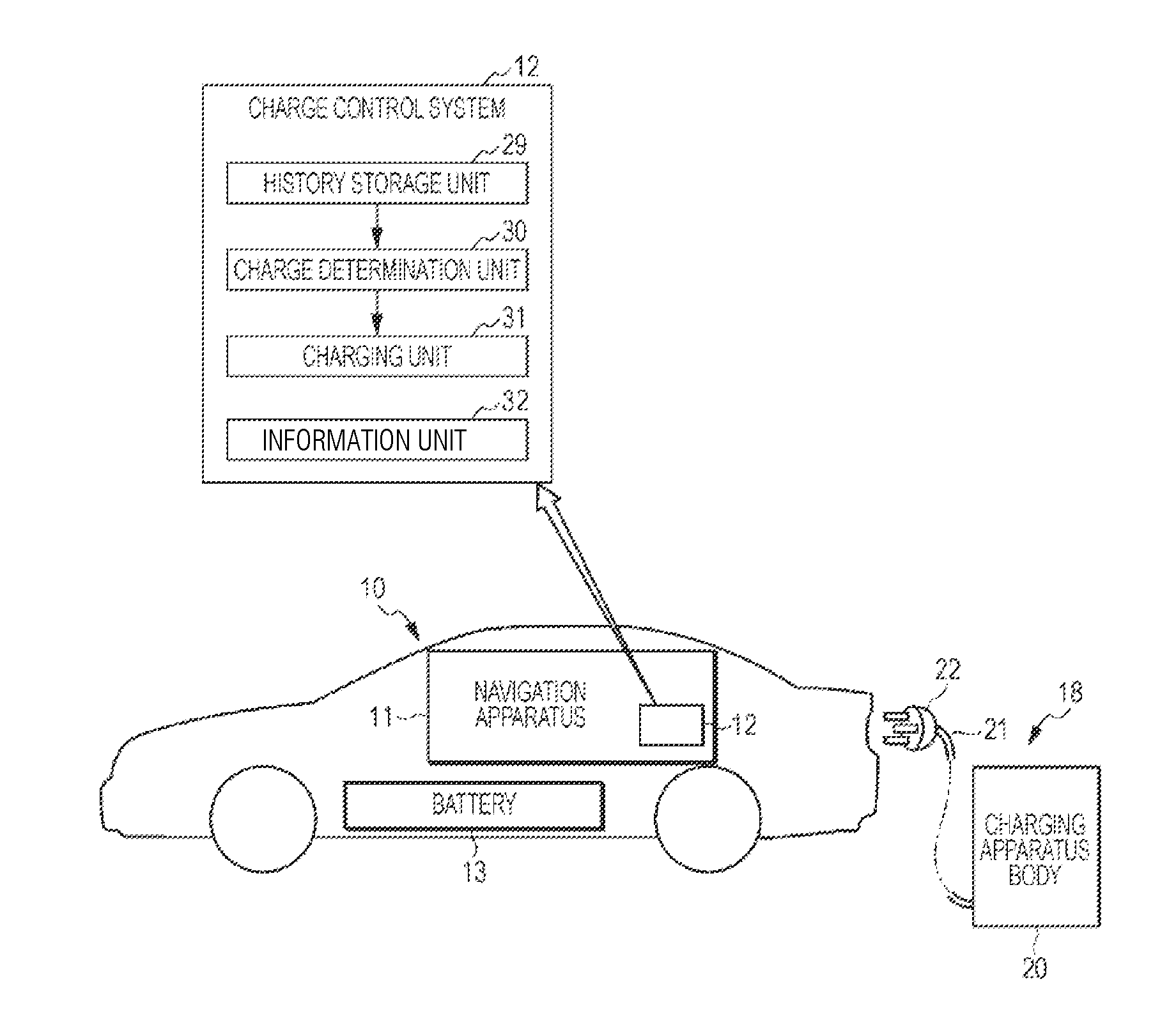Electric vehicle charge control system
a technology for electric vehicles and control systems, applied in charging stations, electric devices, transportation and packaging, etc., can solve the problems of undesirable battery full charge, short distance that can be traveled by electric vehicles per battery charge, and insufficient storage level of present batteries, so as to prevent the depletion of batteries and prolong the life of batteries
- Summary
- Abstract
- Description
- Claims
- Application Information
AI Technical Summary
Benefits of technology
Problems solved by technology
Method used
Image
Examples
Embodiment Construction
[0027]Referring to FIG. 1, an electric vehicle 10 includes a battery 13 for supplying electric power to an electric motor (not illustrated) for driving tires of the electric vehicle 10 and a navigation apparatus 11 including a charge control system 12. In the electric vehicle 10, the charge control system 12, which is included in the navigation apparatus 11, may be separated from the navigation apparatus 11. The configuration of the navigation apparatus 11 will be described in detail later with reference to FIG. 7 along with the description of the relation of connection between the navigation apparatus 11 and a communication control unit 35.
[0028]A charging apparatus 18 is disposed at the house and office of an owner of the electric vehicle 10, and will be disposed at a charging stand along a public road in the future. The charging apparatus 18 includes a charging apparatus body 20 and a plug 22 attached to the leading end of a cord 21 extending from the charging apparatus body 20. ...
PUM
 Login to View More
Login to View More Abstract
Description
Claims
Application Information
 Login to View More
Login to View More - R&D
- Intellectual Property
- Life Sciences
- Materials
- Tech Scout
- Unparalleled Data Quality
- Higher Quality Content
- 60% Fewer Hallucinations
Browse by: Latest US Patents, China's latest patents, Technical Efficacy Thesaurus, Application Domain, Technology Topic, Popular Technical Reports.
© 2025 PatSnap. All rights reserved.Legal|Privacy policy|Modern Slavery Act Transparency Statement|Sitemap|About US| Contact US: help@patsnap.com



